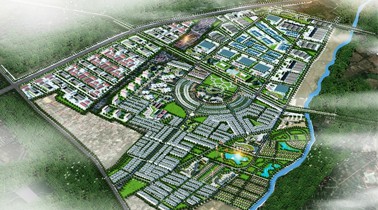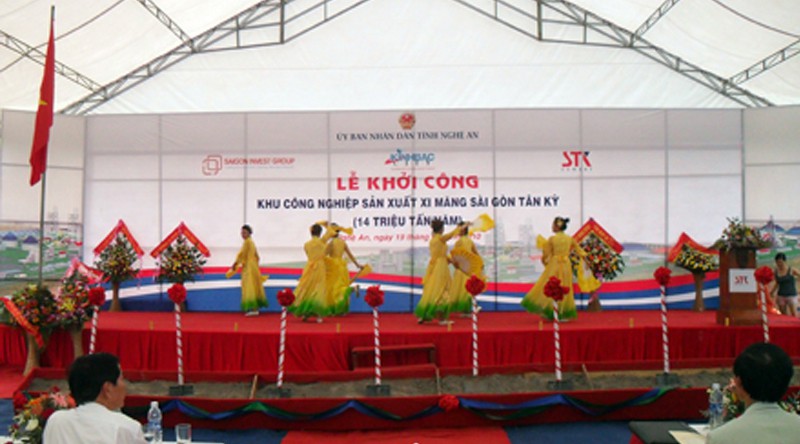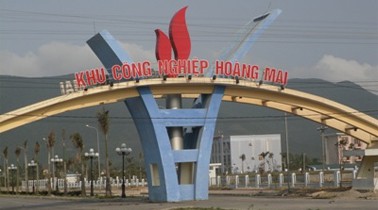Nghe An Province
16490 km2
Northern Central
5
18756
2,978,700 people (2014)
| Total Area | 16490km2 |
| Agricultural Production Land | 2761 km2 |
| Forestry Land | 9637 km2 |
| Specially Used Land | 720 km2 |
| Residential Land | 206 km2 |
|
82 km |
|
| Borders |
North: Thanh Hoa province. Northwest: houaphanh province (Laos), west Xiengkhuang province (Laos). South: Ha Tinh Province. Borikhamxay southwestern province (Laos). East: China Sea. |
|
Climate
Nghe An is in the tropical monsoon region with two typical seasons of wet, rainy summer (from May to October) and cold, dry winter (from November to April next year). Yearly temperature ranges from 23 - 240C. Temperatures are much different between months in a year. Average temperature during the hottest months (June and July) is 330C, up to absolute 42.70C; while during the coolest months (December to February next year) is 190C, down to absolute minus 0.50C. The province receives an average of 1,500 - 1,700hrs of sunshine every year. Annual rainfall in Nghe An is around 1,200 - 2,000 mm/year. |
|
|
Natural Resources
Forestry: The forests of Nghe An have many typical attributes of Vietnam’s general flora. According to the statistics, there are 153 families, 522 lines and 986 species of arbors, herbs, vines and inferiors. In which, 23 species of arbors and 6 species of herbs was recorded in Vietnam Red Book. Forests are concentrated in the hills with two common forest types are evergreen forests, which are within 700m above sea level and the forests of mixed conifers found at more than 700m above sea level. The forests are still an important source for raw materials for industry development. Total capacity of wood currently is 52 mil m3, where Fokienia hodginsi account for 0.425 mil m3 and bamboos, neohouzeaua for about more than 1 billion trees. Such a variety of terrain and ecological characteristics has created a collection of fauna in Nghe An. In the province, it is estimated there are 241 species of 86 families and 28 suborders, with 64 species of mammals, 137 species of birds, 25 species of reptiles, 15 species of amphibious. Among those, 34 mammal species, 9 bird species and 1 fish species were listed in the Red Book of Vietnam. The national park of Pu Mat in the west of Nghe An, which is 93,523ha, was approved by UNESCO for its rank as the biosphere reserve, and other natural reserves including Pu Huong (41,127ha), Pu Hoat (over 34,723ha) with multiple species of animals and plants and having great potentials for tourism development, especially eco-tourism. This reserve stretches over 9 mountainous districts of Nghe An. Marine resources: Nghe An has 82km long coastal line, for an area of 4,230 nautical miles square, with 6 canals along the coastal line (canals of Con, Quen, Thoi, Van, Lo and Hoi) which, at 1 - 3.5m deep, are convenient for boats and ships at 50 - 1,000 DWT. From the depth of 40m backshore, the seabed is relatively flat; in the outer side there are reefs and sand dunes where fish gatherings are available and are potentially economic valuable. Minerals: The province has many different minerals distributed over the districts. These are high quality minerals; main and admixture materials are closely located in addition to the convenience in transportation, creating favourable conditions for the manufacturing of cement, ceramics, fine grains, ashlar tiles, and handcrafts. |
|
| GDP Growth Rate | 8% (2014) |
| Population | 2,978,700 people (2014) |
| Population Density | 186 person/km2 (2015) |
| Population By Sex | 99.3 males per 100 females (2015) |
13.00% (2015) |
|
| Immigration Rate | 10.10% (2015) |
| Labor Force | 1,953,101 people (2015) |
| Labor Force At 15 Years Of Age And Above | 61.00% (2015) |
| Unemployment Rate | 1.47% |
|
Major Industries
Textile & Garment, F&B, Suger, Natural Source Materials |
|
| Annual Average Capital Of Enterprises | 159,441 billion dongs (2014) |
| Net Turnover | 111,554 billion dongs (2014) |
| Profit Before Taxes | 981 billion dongs (2014) |
| Profit Ratio | 0.87% (2014) |
| PCI | 58.47 (2015) - Rank: 32 |
Total Area: 750m2
Occupancy Rate: 0%
Address: Vsip Nghe An, Hung Tay, Hung Nguyen District, Nghe An, Vietnam
|
Transportation
Roads: national roads 7, 48, 46, 15; 132 km Ho Chi Minh road passing mountainous and midland district of the province. Railway: has length of 124 km, of which there is 94 km north – south route, 7 railway stations. Vinh railway station is the main one. Air ways: there are Vinh airport and air routes/flights: Vinh - Da Nang; Vinh - Tan Son Nhat (and vice versa). Sea port: Cua Lo port now can welcome vessel of 1.8 ten thousand tons favorably, creating international exchange connection. International border gates: Nam Can, Thanh Thuy, next time Thong Thu (Que Phong) shall be opened. |
|
|
Telecommunications
Physical facilities and telecommunications network, designed with a full range of services can respond quickly to demands of communication exchange in the country and abroad. Technical infrastructure of the province’s ICT is ranked 9/63 provinces and cities. The province has most of fixed and mobile telephone networks, covering all the districts, cities and towns. So far 100% of wards and communes have telephone, density of telephone subscribers increased from 10.2 telephones per 100 people in 2005 to 90 telephones in 2011; current density of internet subscribers reached 2.64 per 100 people; fiber was around 100% of the district centers and post offices III. |
| People's Council | 16 Truong Thi Street, Vinh City, Nghe An Province. |
| People's Committee | 3 Truong Thi Street, Vinh City, Nghe An Province. |
| Relevant Government Departments |
|
| Province | Nghe An Province |
| Headquarter of People's Committee | 3 Truong Thi Street, Vinh City, Nghe An Province. |
| Official Provincial (or City) Website | www.nghean.gov.vn |

 Geography
Geography
 Economy
Economy
 Connection
Connection
 Infrastructure
Infrastructure
 Government
Government
 Social - Culture
Social - Culture



















